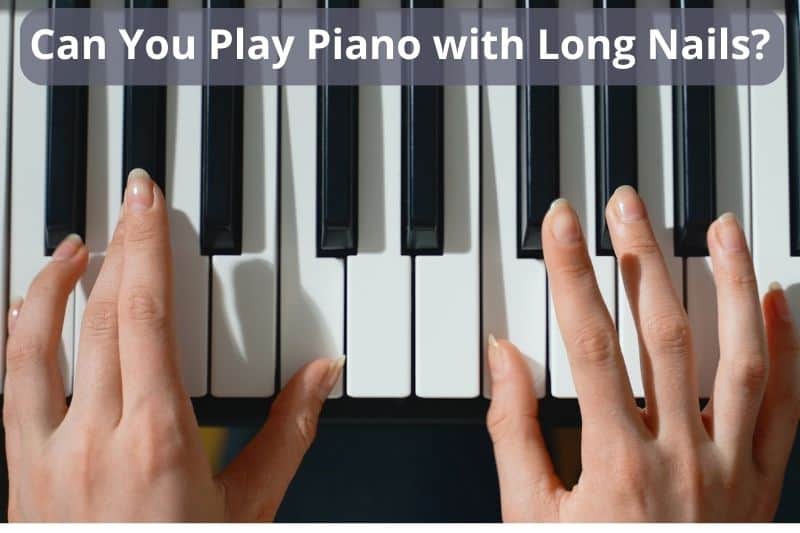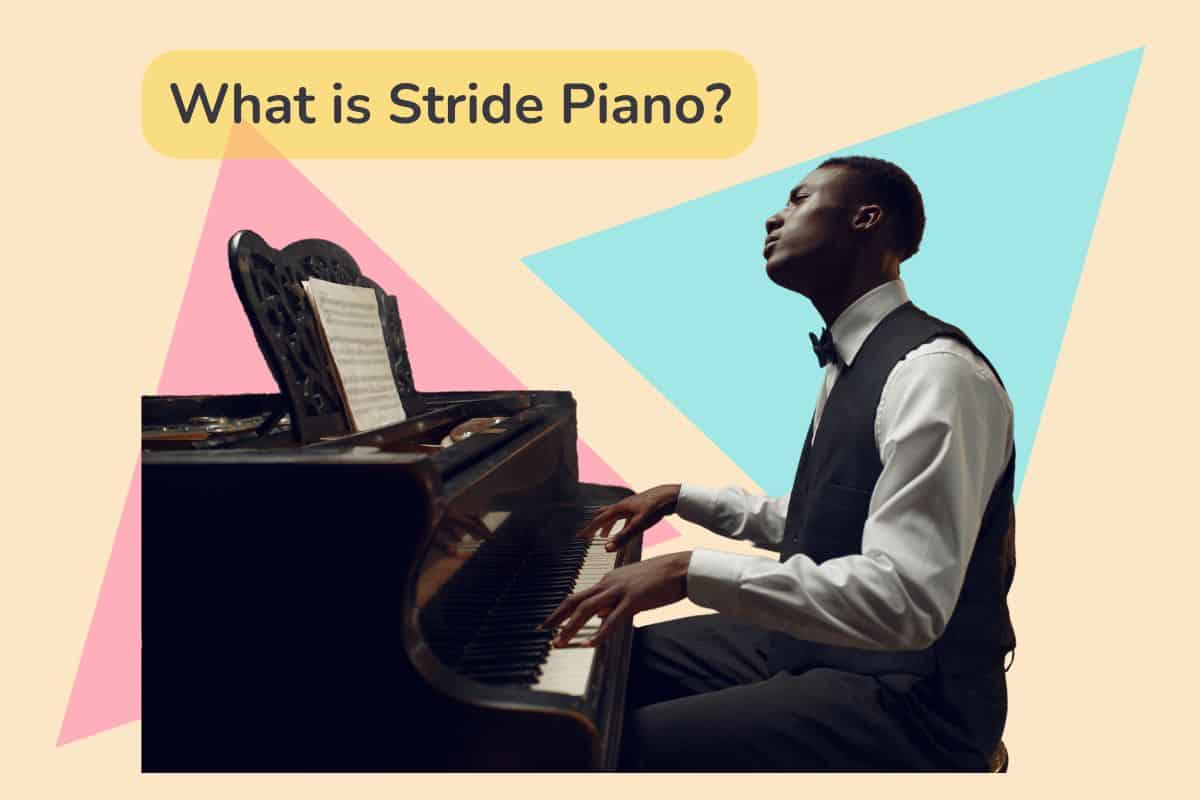Playing the piano is a skill that involves not just your fingers but your entire hand and even your posture. When it comes to nail length, traditionally, it’s suggested to keep your nails short so they don’t interfere with your playing. Although long nails may present a challenge, they don’t make it impossible to play the piano.

Long nails can potentially alter your technique, as you might need to adjust your finger placement to avoid the clicking sound of nails hitting the keys. This doesn’t mean you can’t produce beautiful music; it simply requires some adaptation in the way you approach the keys.
Challenges of Playing Piano with Long Nails
Playing the piano with long nails can compromise your ability to execute pieces with precision and expressive control. Here’s what you need to be aware of when playing with long nails.
Effect on Sound and Control
Long nails can interfere with the clarity of the sound on a piano. When your nails are too long, they might hit the keys with a knocking noise that clouds the tone, disturbing the desired musical expression. The length of your nails can also lead to a loss of contact with the piano keys, making it harder to control soft dynamics and subtle articulations.
Complications in Playing Technique
Extended nails force you to play with straight fingers, which is contrary to the curved finger position typically recommended for piano players. This flat-fingered approach can limit mobility, reducing your playing ability and expression. You might find it challenging to perform quick passages or to maintain evenness in your playing, as longer nails hamper the agility of your fingers.
Risk of Injuries from Long Nails
Playing with long nails raises the risk of injuries, both to the nails and to the fingertips. There’s the possibility of chipping or breaking your nails, which can be painful. Maintaining an unnatural finger position to prevent clicking sounds can strain your hand muscles, potentially leading to repetitive strain injury.
Adjustments for Piano Players with Long Nails
While you can play piano with long nails, some adjustments are necessary to maintain technique and sound quality. This helps you handle the keyboard effectively without compromising your nail length or piano playing.
Adapting Keyboard Technique
Your keyboard approach will need to shift when playing with long fingernails. Focus on the angle and pressure of your fingers to prevent your nails from clicking against the keys or causing unwanted noise. You might need to:
- Play with flatter fingers: While not ideal for all music genres, using flatter fingers can reduce the chance of nails hitting the keys.
- Increase finger strength: Stronger fingers allow for better control and softer touch, which can compensate for the altered hand position caused by long nails.
Maintaining Sound Quality
Long fingernails can affect the sound quality, often resulting in a less precise or muffled tone. To ensure clarity and maintain the integrity of your performance, consider these points:
- Careful articulation: Be extra mindful of your articulation, as it becomes even more significant when playing with long nails.
- Regular adjustments: Continually assess and adjust your touch; the goal is to produce a sound that’s as close as possible to when playing with shorter nails.
Alternative Hand Positions
As a pianist with long nails, you might find certain hand positions uncomfortable or impractical. Experiment with these alternative positions:
- Slightly raised wrist: Elevating your wrist can help align your fingers to strike the keys more effectively.
- Curved fingers: While challenging, maintaining a curved finger position where possible can help retain some level of traditional technique.
As you experiment with these adjustments, keep in mind that what works for one pianist might not work for another. A piano teacher or a professional pianist can provide customized advice on hand positioning and technique for playing with long nails.
The Debate on Nail Length for Pianists
The Argument for Short Nails
Having short nails is widely considered ideal for playing the piano. When you have short nails, you can strike the keys using the pads of your fingers, allowing for a more natural hand position. Short nails help avoid a clattering sound against the keys and enable more precise finger techniques, which is critical for expressive playing.
The Argument for Long Nails
However, some piano players with long nails or fake nails maintain that it’s possible to adapt their technique and still play effectively. If you have long nails, you’ll likely need to adjust your hand position to play with the flatter part of your fingers, though this can limit dexterity and hand movement.
Pianists’ Personal Preferences
Ultimately, your nail length as a pianist boils down to personal preference and tolerance for potential challenges. While there’s a consensus that short nails are more practical, pianists with a personal or professional preference for long nails have found ways to make it work, using unique techniques and adapting their playing style.
Practical Tips for Long-Nailed Pianists
Choosing the Right Nail Shape
The shape of your nails can significantly affect your comfort and playing ability at the piano. Opt for a shape that follows the natural curvature of your fingertips. Oval or rounded nails are often recommended because they’re less likely to catch on the keys and allow for easier finger placement. Avoid sharp points or square shapes, as these can impede your technique and cause distracting noises.
Strategies for Trimming and Filing
Keeping your nails at a consistent length is vital. Regular trimming should be part of your routine to maintain not only the nail length but also the quality of the sound you produce. Use a nail file to smooth edges after trimming, as this can enhance your touch sensitivity on the keys. Even a small snag can be a significant distraction while playing.
Techniques for Minimizing Distractions
To play effectively with long nails, it’s key to adapt your technique to minimize distractions. This may include adjusting the angle of your fingers to avoid nails hitting the keys too loudly. Maintain a relaxed hand position and use the pads of your fingers, rather than the tips, to press the keys. This adjustment helps preserve the expressiveness of your performance without the interference of nail noise.
Additional Considerations for Specific Genres
When playing piano across different genres, the impact of your nail length may vary. It’s important to consider how this choice will affect both your technique and the aesthetics expected within each genre.
Classical Music and Nail Constraints
In classical music, precision is paramount. The works of composers like Mozart demand a tactile connection with the keyboard where shorter nails typically afford a level of control and accuracy that long nails might compromise. For instance, when you’re aiming to project the nuanced dynamics and articulations of a Mozart piano concerto, long nails might hinder your ability to execute delicate passages.
Modern Genres and Nail Aesthetics
On the flip side, the visual component of performance can be influential in modern genres. In these spaces, appearance, including the look of your nails, can be a part of your stage persona. For example, classical guitar is not the focus here, but picture a pop or jazz pianist where the showmanship could lean towards flashy nails as part of a curated image. It’s still possible to adapt piano technique to accommodate longer nails if the visual aesthetic is an integral part of your performance identity in these more contemporary contexts.
Performance Considerations for Long Nails
Playing the piano with long nails can impact your stage presence as well as the sound quality during live performances.
Stage Presence and Visuals
Long nails can be a visually striking choice that boosts your stage persona. They add an element of flair that might complement your performance, especially in genres where visual presentation is a key component. However, they shouldn’t compromise the clarity or precision of your movements.
- Visual Impact: Bold nails may contribute to your stage character.
- Physical Adaptation: Required to avoid hindering expressive gestures.
Maintaining Quality During Live Play
When you’re live, your primary focus is on consistently delivering quality sound to your audience. Long nails pose a risk to sound quality; they may create unwanted noise when striking piano keys. Also, adapting your playing technique to accommodate nails could affect your dynamic control.
- Sound: Watch out for clicking sounds that can bleed into melodies.
- Technique: Flatter finger positioning is necessary but may limit expressiveness.
As you can see, long nails don’t have to hinder your ability to play the piano well.



